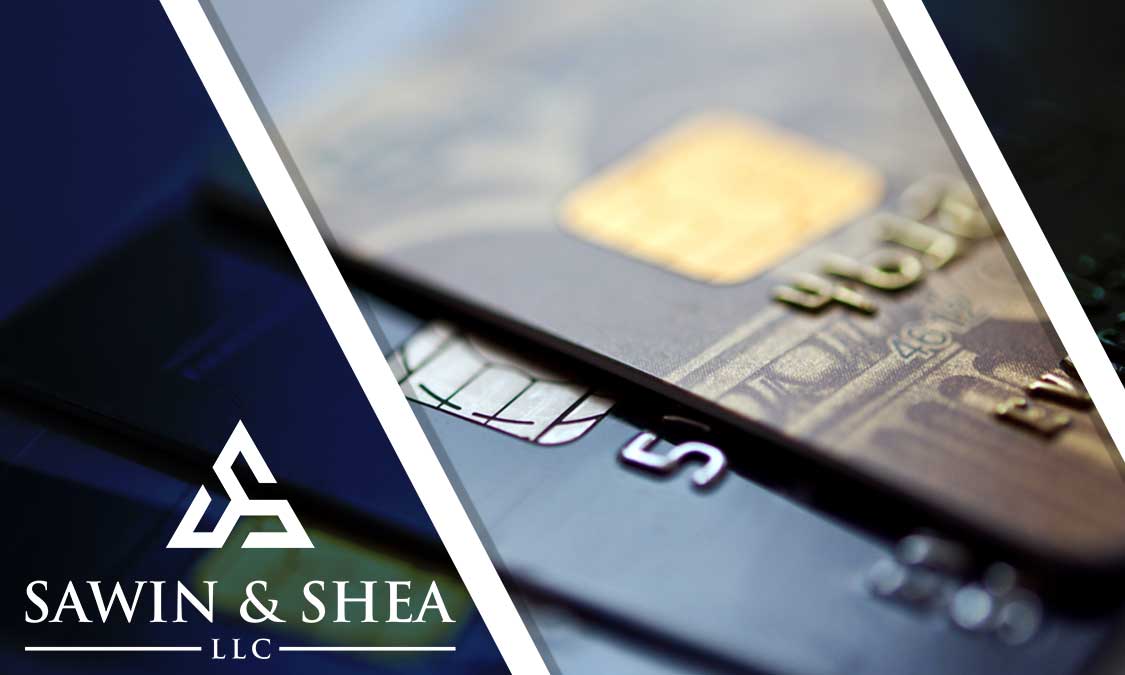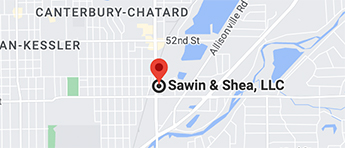
No one would argue that we have been living through some turbulent economic times in the past several years. Factors like inflation, high interest rates, and economic uncertainty have found more and more Americans relying on credit cards to get by. In fact, Americans are at an all-time high when it comes to credit debt to the tune of $1 Trillion. On average, Americans individually carry about $7,951 in credit card debt. With those figures, chances are you are among the millions of Americans needing credit debt relief.
In this article, we will give you some ways to find relief from the weight of your debt and show you how bankruptcy attorneys like Sawin & Shea can help you.
What Happens if You Get Behind?
Getting behind on paying your debt tends to have a big snowball effect on your credit debt. What often happens is the “Robbing Peter to pay Paul” effect, which means you use credit cards to pay other debts you are behind on, thus making your credit debt situation bigger and more overwhelming.
Once you start getting behind on your credit card debt, the consequences just make the situation worse. These include:
- Penalty Fees : Credit card companies typically charge between $15 – $35 for a late payment, adding to your balance. If your balance is small to begin with, this can be a painful percentage of what you owe.
- Higher Interest Rates: While credit card companies are restricted from randomly raising interest rates, an exception to that would be if you are 60 days or more late with your payment. When this happens, your interest rate can skyrocket and make the situation harder to dig out of.
- Collection Agency Involvement: After being 90 days delinquent on a credit card payment, the company might send you to their collections department. This means you will be contacted (usually A LOT) by their debt collectors to arrange payment. This action will leave a negative report on your credit rating, which could spell trouble for your future purchasing options.
In short, getting behind on your credit card payments will cost you a lot more money and add to your credit card debt stress for the foreseeable future.
What You Can Do If You’re Behind
If you’ve fallen behind, and are desperate for credit debt relief, you are certainly not the only one. It’s estimated that 61% of the population currently carries credit card debt, and 14% of those people reported missing a payment in 2023.
If you’ve fallen behind on your credit card debt, there are some actionable things you can do to help get your way out of the stressful situation.
Revisit Your Budget
If you’ve never had a budget you followed or haven’t looked at it in a while, it’s time to get back on track and take an honest look at your income and expenses. Many people find there are numerous ways they can cut corners here and there to help them get caught up and pay more than the minimum balance on their credit debt.
Call Your Credit Company
A little transparency goes a long way. Informing your creditors of your particular financial situation could make them willing to waive a penalty fee or keep an interest rate at a manageable level. Contacting them sooner rather than later is advisable as it lets them know you aren’t an irresponsible debtor, you just need some assistance.
Consider Filing for Bankruptcy
While it should be at the bottom of your list of solutions, it should be on the list as it is a viable option for credit debt relief. Two forms of bankruptcy may be your saving grace for your debt management goals:
- Chapter 7 Bankruptcy, which discharges your credit debt in exchange for selling certain non-exempt assets to pay something to your creditors.
- Chapter 13 Bankruptcy, which helps you develop a debt repayment plan. This plan also allows you to keep your assets and forces creditors to take what the bankruptcy law says you have to pay on your debts..
How Does Debt Relief Affect Your Credit?
Debt relief can have both positive and negative effects on your credit, depending on the method you choose and how you manage the process. Debt relief programs, such as debt settlement or debt management plans, will lower your credit score because they often involve negotiating with creditors to reduce your interest rates while you miss payments. This results those late payments being reported on your credit report. Further, these types of plans are voluntary. Creditors can choose not to participate and can move forward with more drastic collection efforts such as lawsuits when they get tired of waiting for payment. Bankruptcy has a impact on your credit, as it typically remains on your credit report for several years. However, it provides a fresh financial start, allowing you to rebuild your credit over time. Creditors cannot opt out of participation in a bankruptcy, and no collection efforts on pre-petition debts can continue after filing.
From a simple phone call to your credit card company to filing for bankruptcy, there are ways you can find the credit debt relief you need to sleep better at night and take control of your financial future.
How Sawin & Shea, LLC Can Help
At Sawin & Shea, we know the toll all debt can take on an individual, a relationship, and a family. Start taking control of your financial situation again with our help. We can help determine if bankruptcy is the best option for you and which bankruptcy option will help you get back on your feet the best.
Whether you’re being harassed by creditors or looking at what bankruptcy option is best for you and your family, Sawin & Shea has your back. Contact us today for a consultation and begin taking control of your financial wellness today.



